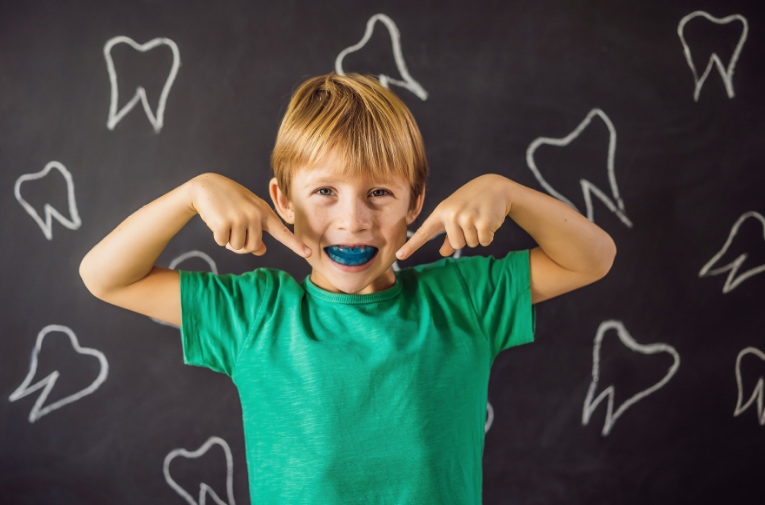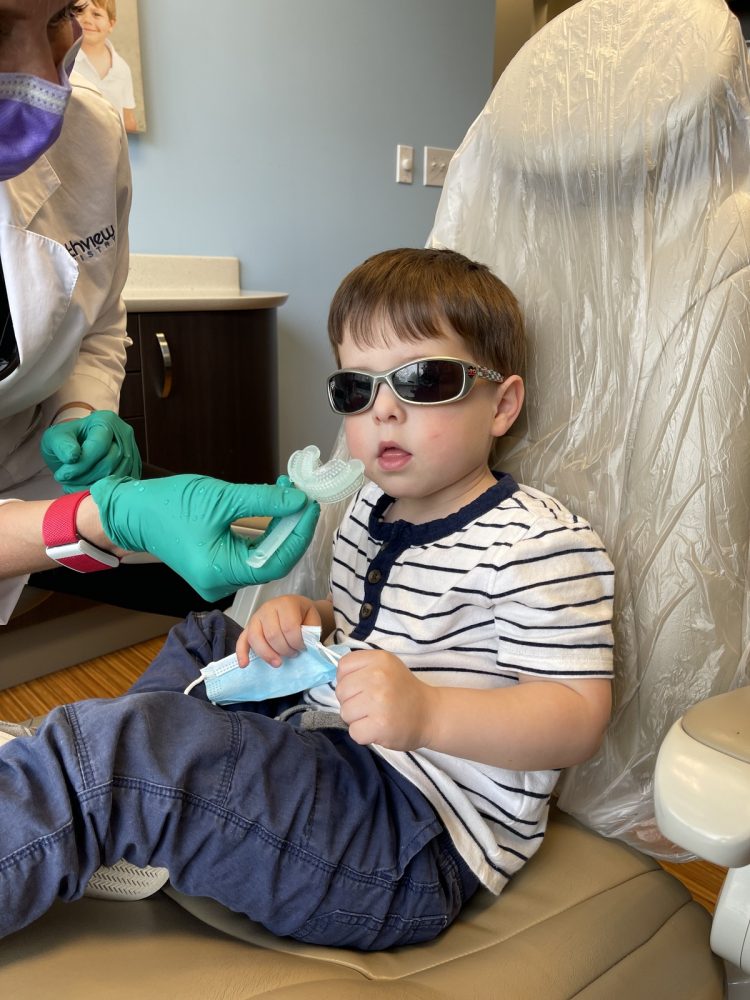
Is Myofunctional Therapy Covered by Insurance? Here’s What You Need To Know
February 27, 2022
What Foods Are Good For Oral Health?
May 23, 2022Many ask us, “what is Myomunchee therapy?” Usually, this is one of the first questions that arise after a dentist or allied health professional suggests it might help with oral development.
Myomunchee therapy can help people of just about any age who have issues related to underdeveloped oral muscles.
Please note this article isn’t a substitute for individualized dental or medical care. Therapy like Myomunchee works best when prescribed by a dentist or other health professional.
What Does Myomunchee Therapy Help With?
Chronic mouth breathing is a common issue among children and adults. In children, if left untreated, it can contribute to or lead to more serious developmental and health issues. When included within a treatment plan, Myomunchee therapy can be used to strengthen muscles that help establish better nose breathing.
Some people with sleep apnea also find Myomunchee helpful since mouth breathing is part of the problem associated with sleep apnea. Typically, when the airways are blocked to make nose breathing less effective, people compensate by breathing through the mouth.
In some cases, Myomunchee may help with:
- Correcting some orofacial muscular functions
- Getting children to stop thumb sucking
- Assist with jaw development in growing children
- Improving speech
- Assisting in the drainage of the eustachian tubes, it can help reduce ear infections.
Talk with your dentist about which benefits may apply to you or your child. Myomunchee and other myofunctional exercises are like physical therapy for the mouth.
Who Might Benefit
People of just about any age group starting as young as 18 months, may benefit from using a Myomunchee. Some providers recommend it for toddlers who have trouble giving up their pacifier or thumb sucking. Habitual thumbsucking or pacifier use can negatively influence growth and development.
Children who get recurring ear infections or are chronic mouth breathers also participate in Myomunchee therapy. Teens and adults with mouth breathing, tongue thrusting, or other issues may also benefit.
In summary, it is used to treat:
- Oral dysfunction
- Chronic mouth breathing
- Poor tongue posture
- Sleep apnea and other sleep-disordered breathing
- Trouble chewing or swallowing
- Habitual thumb or finger sucking
- Problems with learning speech, daily speech, and articulation
Problems Orofacial Myofunctional Disorders May Cause or Exacerbate
Orofacial Myofunctional Disorders may contribute to a variety of oral health concerns, including:
- Misaligned teeth
- Bruxism or teeth grinding
- Abnormal jaw growth
- Dry mouth
- Gum disease
- Difficulty breathing or sleeping
- Problems with ear drainage
- Chronic headaches
What is a Myomunchee Device?
A Myomunchee is a device made from medical-grade silicone designed to exercise the oral muscles or strengthen the stomatognathic system. It helps you develop better chewing, breathing, sleeping, and other aspects of overall health.
Your dentist fits you for the device that lasts around six months, depending on your program. The exercises help strengthen the stomatognathic system (the area in and around the mouth and jaw)
Myomunchee exercises are often part of a therapy program. One exercise is simple: chew with lips together and swallow with lips together! Start with just one minute twice a day and gradually work up to around 10 minutes twice a day. Be sure to rinse your Myomunchee device before and after each use. It can be submerged in hot water; check the manufacturer’s instructions for details on cleaning your appliance.
Depending on the treatment plan, the Myomunchee can be used either actively or more passively. Passive use may be simply holding the appliance in your mouth. Sometimes passive use is recommended to allow the mouth to rest while also promoting nose breathing.
The chewing exercises designed to tone and strengthen facial muscles would be considered active use. Active use promotes muscle toning.
The Myomunchee device was originally developed in the 1960s by a dentist named Dr. Kevin Bourke. The goal was to help children develop the muscles that support chewing, breathing, and other activities that influence facial cranial development.
During Myofunctional therapy, the goals are usually to:
- Develop oral muscles, including the tongue and lip muscles
- Correct any problems swallowing
- Encourage correct posture of the lips and tongue
- Promote mouth breathing
- Ensure healthy development
Myomunchee exercises are an important aspect of treatment for many people. The use of the Myomunchee also stimulates saliva production, which can be highly beneficial for some people since a dry mouth is associated with a variety of oral health issues, including tooth decay, bad breath, and gum disease.
When you or a family member visits a myofunctional therapist, keep that therapist informed of any other health issues, medications, and treatments currently used. Sometimes it is easy to overlook vital information your dentist or therapist needs.
Next Steps: Visit a Myofunctional Therapist
If you or a family member has trouble with habitual mouth breathing at night, difficulty swallowing, or any of these issues, consult with a dentist or doctor.
In many ways, your dentist is well-positioned to help since they are experts on oral health and mouth development. Myofunctional therapy is multidisciplinary, often involving a few different kinds of health professionals.
We at Southview Dentistry proudly treat Charlotte-area residents and their families. While we are a highly trusted practice for cosmetic dentistry, myofunctional therapy is also close to our hearts. We have a proven track record and a passion for treating Orofacial Myofunctional Disorders.
Our own Dr. Kelly Wilson is a trained Myofunctional Therapist. She brings her passion for helping Charlotte area children and families achieve great oral health and development.
Dr. Kelly understands that children don’t “grow out of these dysfunctions; they grow into them,” and the best way to treat them is to treat them early.
She draws from various techniques and customizes each treatment to the individual. Other possible treatment options may include breathing exercises, resolving dental issues, mouth taping, and more.
Contact us today to schedule an examination and consultation appointment.




